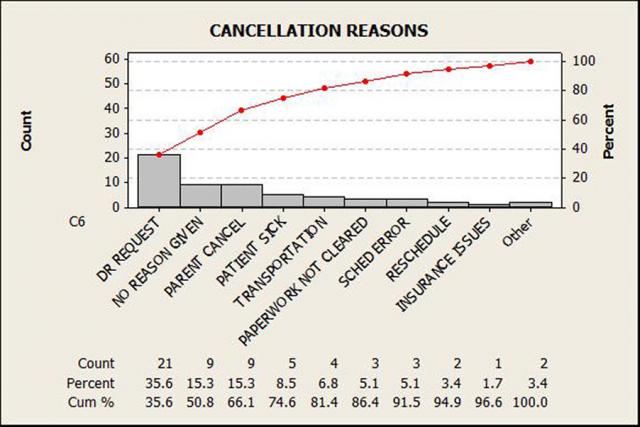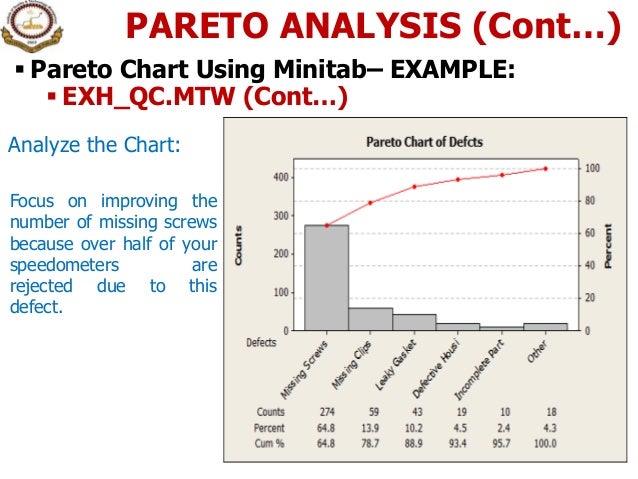

We also want to use our platform to highlight the response from the scientific community. This entry was posted in Blog and tagged pareto, six sigma.
#Pareto chart minitab how to
We will continue on How to Create Pareto Using Microsoft Excel in our next post A Pareto chart often uncovers low-hanging fruit in this manner. Filing claims on time is not difficult in many cases, given the fact that most payers allow months or even a year for claims to be filed, so this could be an “easy” win for the team. However, the team might choose to work on the timely filing problem first because timely filing denials are final, which means the office is losing the revenue associated with all those claims.
#Pareto chart minitab verification

Payers often deny claims, and they do so for a variety of reasons. To illustrate the Pareto principle, we’ll look at a common situation involving defects in the medical field-specifically in the process for submitting medical claims.
#Pareto chart minitab software
Statistical software used to create such charts adds formatting and other elements automatically, but you can also create a basic Pareto chart in Excel. Unlike a regular bar chart, the bars are arranged in order of height, with the highest on the left and the lowest on the right. The Pareto principle is best displayed using a Pareto chart, which is a graphical representation of data elements – usually inputs or causes – in a ranked bar chart. While resources, costs, and difficulty of improvements also play a role in solution selections, understanding which inputs or root causes are high on a Pareto chart let project teams determine where improvements will make the biggest impact to the bottom line. Individuals seeking to reduce defects can almost always identify three to four inputs that, if improved, will create dramatic impact on the outcome. The principle is critical to Six Sigma not because causes and effects line up nicely via an 80/20 breakdown, but because it almost universally applies that a few inputs create more impact than all the other inputs. Business professionals commonly state that 80 percent of sales come from 20 percent of customers, and volunteer organizations usually operate with 20 percent of the people doing 80 percent of the work. The principle has become common in various circles. Juran named the principle for Vilfredo Pareto, an economist in Italy who wrote that 20 percent of the nation’s people owned 80 percent of its land. The Pareto principle was first suggested by a management consultant named Joseph Juran. This there is also called the law of the vital few: the vital few inputs drive most of the outputs.

The Pareto principle, also called the 80/20 rule, says that 20 percent of the causes lead to 80 percent of the effects. What is Pareto Chart and why it is so great?


 0 kommentar(er)
0 kommentar(er)
